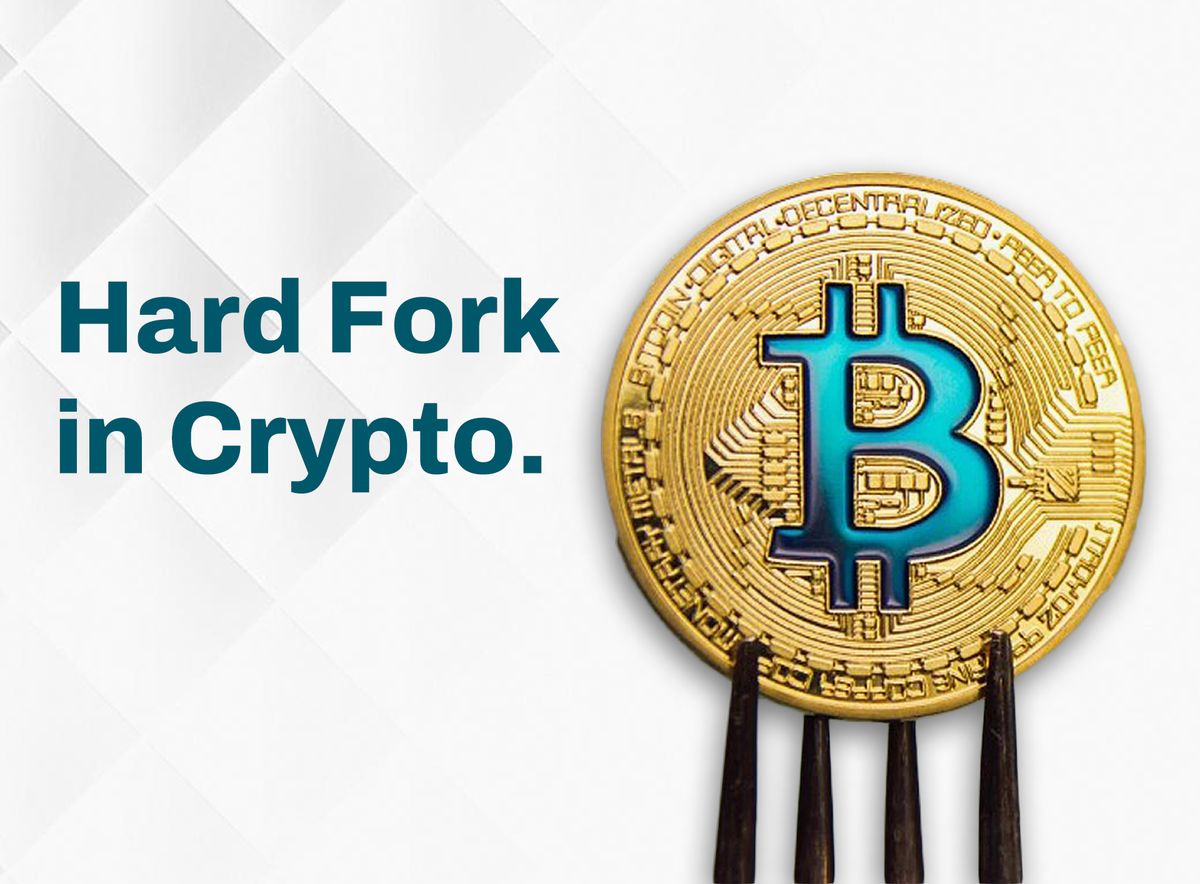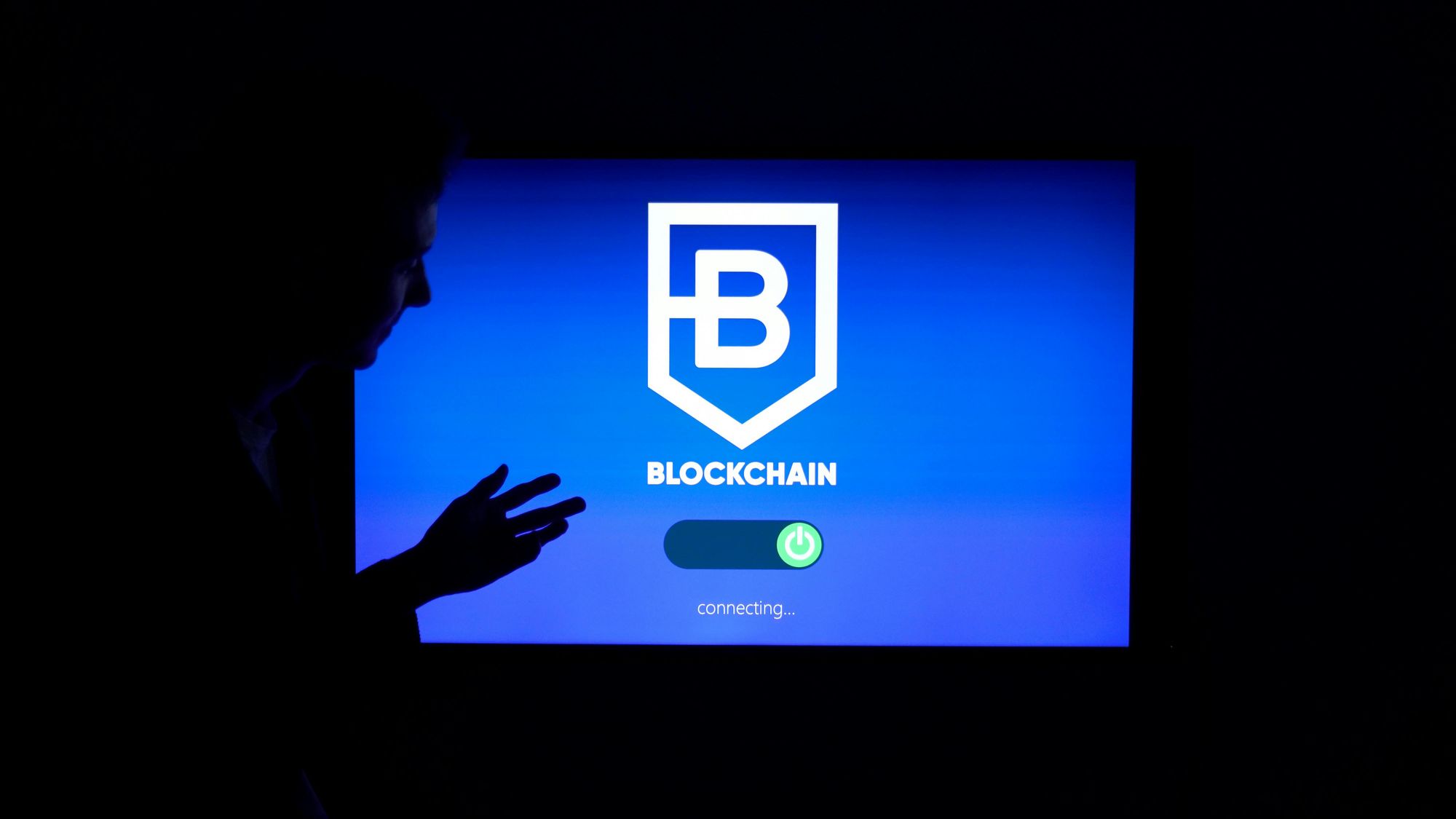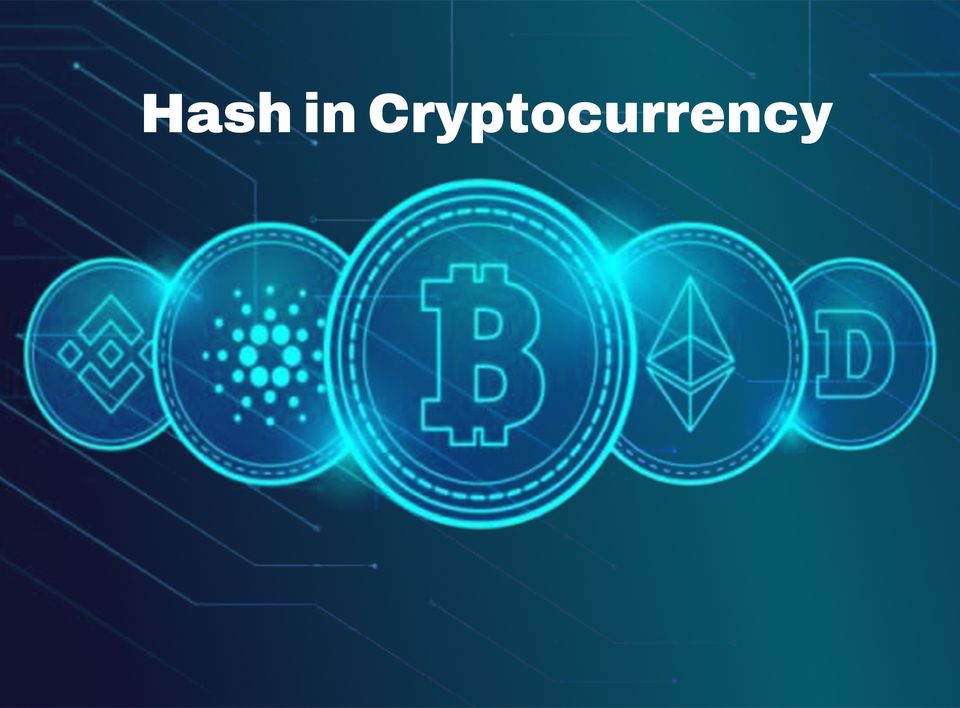What is a Hard Fork in Crypto?
A hard fork occurs when a new software update implemented by a blockchain makes it incompatible with the existing blockchain protocol.

Table of Contents
- Introduction
- Understanding the nature of Hard Forks
- Reasons for Hard Forks
- The Process of a Hard Fork
- Implications of a Hard Fork
- Wrap Up
- FAQs
Cryptocurrencies and blockchains evolve over time because of the fast-moving nature of blockchain innovation.
A blockchain is a distributed database shared among a computer network's nodes. It is a decentralised, distributed ledger that records transactions across a network of computers in a secure, unalterable manner.

Each transaction is grouped into a block, and this block is cryptographically linked to the preceding block and forms a chain of blocks. Blockchains are best known for their important role in cryptocurrency systems. However, they can also be used to make data in any industry unalterable.
Blockchains are governed by a set of rules that must be followed by the network participants. These rules set particular parameters and standards that guide mining, staking, node connections, and transaction specifics. They must be followed by all the participants on that blockchain. Like all things, this protocol is often subject to change, and this change is what creates hard forks.
In this article we are going to be discussing the nature of hard forks.
What is a Hard Fork?
A hard fork occurs when a new software update implemented by a blockchain makes it incompatible with the existing blockchain protocol.
This incompatibility causes a permanent split that results in two separate incompatible versions of the blockchains that run in parallel. One version following the old protocol, and the other following the newly implemented code.
A fork in cryptocurrency happens when the majority of the users of a blockchain cannot agree on an update. Forks can be split up into accidental and intentional forks and are of two types: hard forks and soft forks.
Unlike soft forks, which are essentially backward-compatible updates, hard forks establish a permanent change in the protocol of a blockchain, creating two versions that propagate their own transactions and blocks.

After a short time, miners are often forced to choose between making an upgrade or continuing to run on the obsolete version.
If a group of users decide to use the old software while the others use the new software, a permanent split can occur.
A more common scenario is that after the new fork is created, those using the old chain realise their version is outdated and less useful and choose to upgrade to the new one. People who held the original cryptocurrency before the hard fork will likely receive an equivalent amount of the new cryptocurrency.
However, it is possible that the two blockchains can run parallel to each other indefinitely.
Reasons for Hard Forks
Developers may decide to change the protocols of a blockchain to implement a hard fork for a number of reasons.
Hard forks are a means of significantly improving the blockchain's functionality. This might include enhancing the blockchain's capacity to handle larger transaction volumes, expanding its use cases, and improving efficiency.
Hard forks are necessary to address community disagreements and security vulnerabilities in the blockchain's code. They allow developers to patch security risks and protect the network and users.
In rare cases, hard forks can be used to undo the effects of a major hack. A good example of this is the Ethereum Classic(ETC) chain formed after a hard fork of Ethereum due to the Decentralized Autonomous Organization (DAO) hack.
The initiation of a hard fork often leads to the creation of a new cryptocurrency and this is one of the most important impacts of hard forks.

How Hard Forks Work
A disagreement usually triggers this process. The developers and users are unsatisfied with the blockchain, its functionalities, and underlying technology. They want to add a new feature or fix a security issue.
The developers will propose these changes to the existing blockchain protocol. If this disagreement cannot be resolved, the proposed changes are implemented and two versions of the blockchain coexist.
One follows the old protocol, and the other is in line with the new protocol. Users will have the choice of upgrading to the new version of the blockchain or remaining on the obsolete one.
Transactions on the old version will not be valid on the newer version, and vice versa. This creates two separate cryptocurrencies, each with its own blockchain.
Holders of the original cryptocurrency typically receive an equivalent amount of the new cryptocurrency because their holdings are copied onto the new blockchain.

Types of Hard Forks
There are two types of hard forks, and they are classified on the basis of their functionality and the motivation behind their creation.
There is the Contentious Hard fork, which arises from disagreements within the cryptocurrency community on the direction the project should take. It usually implements major changes to the blockchain protocol, fixes fundamental issues, or reverses controversial transactions. This type of hard fork usually results in a permanent split of the blockchain and the creation of two competing cryptocurrencies. A notable example of this type is the Bitcoin Cash(BCH) split from Bitcoin(BTC) due to disagreements on block size limits.
The Planned Hard Fork is introduced with community consensus and occurs according to a predetermined schedule to implement major upgrades; add new features, improve scalability or enhance security. This type is usually a smooth transition as nodes are required to upgrade their software as the upgrades are not backward compatible. An example is Ethereum’s planned hard forks to transition from Proof-of-Work(PoW) to Proof-of-Stake(PoS) consensus.

The two types of hard forks depend largely on the level of community agreement on the changes to be implemented.
Implications of a Hard Fork
A hard fork is a process with pros and cons. It can be advantageous and used to solve problems on the block chain, but it can also have disadvantages.
Positive Implications of Hard Forks
- Hard Forks can be used to fix bugs, patch security holes, and improve the functions of the blockchain as a whole.
- New features that aren't compatible with the existing protocols can be introduced in the new version, making the cryptocurrency more versatile.
- If a community is divided over a project, a hard fork can reflect the needs of the different factions, allowing them to each pursue their preferred path for the project.
- In cases of attacks or hacks, a hard fork can be the easiest way to restore the network’s security and integrity.
- Hard forks allow developers to experiment with major protocol changes or new features without risking the stability of the primary blockchain.

Negative Implications of Hard Forks
- Contentious hard forks can create rifts within the community and cause divisions between users who support the new fork and those who support the original blockchain. This disagreement can weaken the overall system.
- Hard forks cause confusion and uncertainty, especially for users who are new to cryptocurrency trading, leading to a sense of anxiety about the future of cryptocurrency.
- The value of the old cryptocurrency and the new ones may be very volatile and fluctuate wildly during the period of a hard fork.
- Hard forks can introduce new security risks, increasing the potential for replay attacks and consensus vulnerabilities.
- Achieving a consensus among the network participants is necessary for the success of a hard fork. Disagreements can undermine the viability of the forked chain.
To Wrap Up
Hard forks are possible because of cryptocurrencies' decentralised nature. They remind us of how the cryptocurrency space is rapidly evolving and enable the creation of new blockchains and cryptocurrencies.
Hard forks are driven by protocol upgrades, community disagreements, or governance issues. While they can bring about innovation, they also have significant effects on the market and can fuel price volatility and division in the crypto space.
Understanding the mechanism of hard forks is necessary for anyone interested in cryptocurrencies. Whether you are a miner, an investor, or simply a crypto enthusiast, staying informed about the developments in hard forks and other blockchain events can help you become better equipped to navigate the fast-paced world of crypto.
FAQS
Q: What is a Hard Fork?
A: A hard fork occurs when a new software update implemented by a blockchain makes it incompatible with the existing blockchain protocol. This creates a permanent split, resulting in two separate incompatible versions of the blockchains that run in parallel.
Q: What causes a Hard Fork?
A: Hard forks are usually triggered by disagreements within the cryptocurrency community regarding the direction of the project. They can also be initiated to fix security vulnerabilities, add new features, or address fundamental issues within the blockchain's protocol.
Q: How do Hard Forks work?
A: Hard forks occur when developers propose changes to the existing blockchain protocol that cannot be resolved. This leads to the implementation of two versions of the blockchain. Users then have the choice to upgrade to the new version or remain on the obsolete one, creating two separate cryptocurrencies.
Q: What are the types of Hard Forks?
A: There are two types of hard forks: Contentious Hard forks, which arise from disagreements within the community and usually result in a permanent split, and Planned Hard forks, which occur with community consensus according to a predetermined schedule to implement major upgrades.
Q: What are the implications of a Hard Fork?
A: Hard forks have both positive and negative implications. Positively, they can fix bugs, introduce new features, and restore network security. However, they can also cause community rifts and market volatility, and introduce new security risks.
Q: Why are Hard Forks significant?
A: Hard forks demonstrate the decentralised nature of cryptocurrencies and enable the creation of new blockchains and cryptocurrencies. They are driven by protocol upgrades, community disagreements, or governance issues, and understanding them is crucial for anyone involved in the cryptocurrency space.
Q: How do Hard Forks impact cryptocurrency users?
A: Hard forks can impact cryptocurrency users in several ways. If they hold the original cryptocurrency before the fork, they may receive an equivalent amount of the new one. Additionally, users must decide whether to upgrade to the new version of the blockchain or remain on the obsolete one, which can affect their transactions and holdings.
Q: Can Hard Forks be beneficial?
A: Yes, hard forks can be beneficial as they allow for the implementation of significant improvements to the blockchain's functionality, such as increasing transaction capacity and enhancing security. They also provide opportunities for innovation and experimentation with new features.
Q: What are the risks associated with Hard Forks?
A: Hard forks carry certain risks, including creating divisions within the community, causing market volatility, and introducing new security vulnerabilities. Additionally, achieving consensus among network participants can be challenging and may impact the success of the forked chain.
Q: How do developers decide to implement a Hard Fork
?A: Developers may decide to implement a hard fork to address community disagreements, improve the blockchain's functionality, or fix security vulnerabilities. The decision is typically made after extensive discussion and evaluation of the potential benefits and risks involved.
Q: Can Hard Forks be reversed?
A: Hard forks are generally permanent changes to the blockchain's protocol, resulting in two separate versions of the blockchain. While it is technically possible to reverse a hard fork, it would require widespread consensus among network participants, which is often difficult to achieve.
Disclaimer: This article was written by the writer to provide guidance and understanding of cryptocurrency trading. It is not an exhaustive article and should not be taken as financial advice. Obiex will not be held liable for your investment decisions.




